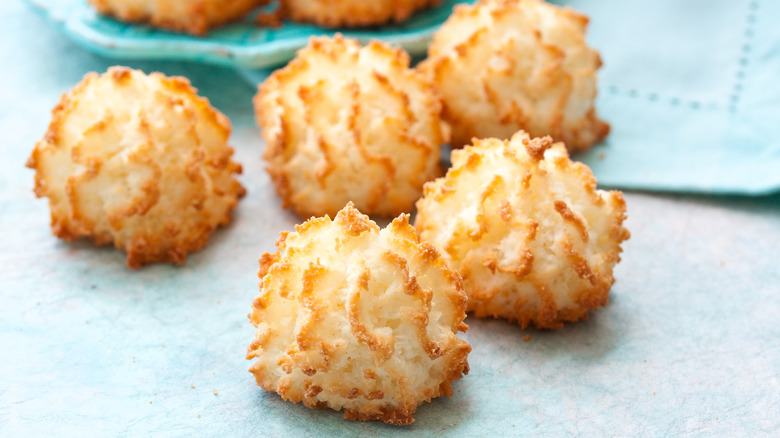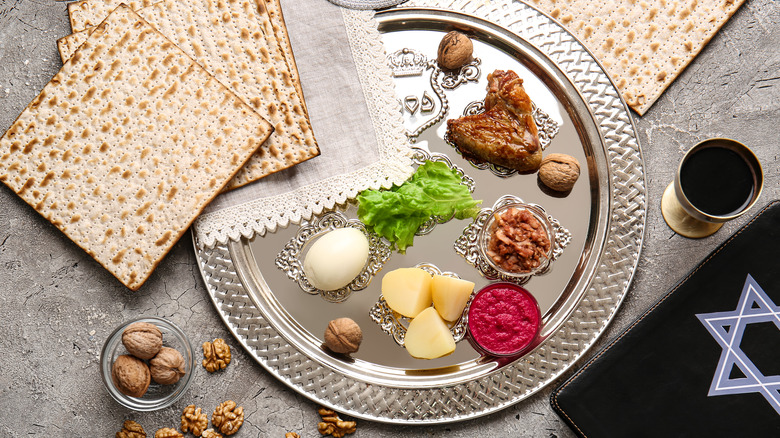How Macaroons Found Their Place On The Passover Dessert Table
Passover is a holiday known for its culinary traditions. As kids, we dipped our pinky fingers in grape juice and chased our cousins all over the house searching for the afikoman (hidden matzah); as adults, we upgraded to wine and the honor of hiding the flatbread. But if you're attending a Seder this year, you may be surprised to find macaroons hidden between the plates of gefilte fish, hard-boiled eggs, and charoset. Considering they're originally an Italian dessert, what are they doing at Jewish Passover tables all over the U.S. today?
Macaroons (not to be confused with macarons, the colorful French sandwich cookies) are simple drop cookies, usually mixed with shredded coconut. Unlike many other elements of a Seder, they don't have any historical or religious significance tied to the holiday, but they do possess an ingredient list that can follow Kosher and Passover culinary rules. Macaroons don't include flour and leavened bread, which are generally omitted during Seders. They're also dairy-free, which allows them to be consumed next to meat dishes while following Kosher guidelines.
Coconut was an American addition to macaroons
So we know why macaroons are qualified to sit at the Passover table, but how did they end up there? The tradition likely started with Jews across the pond — possibly Italian Jews who enjoyed the almond-based dessert from Sicily, and communities from Egypt and Syria, who ground a variety of nuts into theirs. But it wasn't until these Jews came to the U.S. that coconut was brought into the mix, and the treat transformed into the one you see today.
Swapping out nuts for coconut turned these cookies into a more cost-effective and shelf-stable treat, as a Philadelphia flour miller named Franklin Baker discovered. In 1871, recipes for the almond and coconut versions of these cookies popped up in the "Jewish Cookery Book" by Esther Levy. A wave of Jewish immigrants in the 1880s, combined with an influx of coconut shipments from Cuba in 1894, likely led to increased interest in the treat as a Passover staple.
Macaroon companies also started to advertise their products to Jews on Passover around this time. The brand Manischewitz, which is now famous (or notorious, depending on your preferences) for its wine, was founded in 1888 and became one of the main companies to market macaroons, along with a variety of other Jewish foods. You can still buy their iconic boxes today — or you can try your hand at a homemade recipe for Passover coconut macaroons instead.

